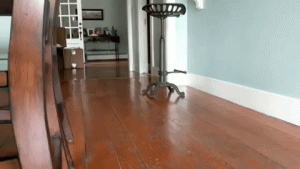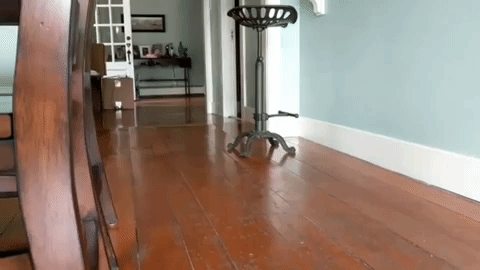
Radiant floor heating, a luxurious and energy-efficient comfort solution, pairs exquisitely with the timeless beauty of hardwood flooring.
However, installing hardwood over a radiant heat system requires meticulous planning, precise execution, and a thorough understanding of the unique considerations involved.
This ultra-detailed guide will equip you with the knowledge and expertise to achieve a seamless, warm, and enduring hardwood floor installation over radiant heat, ensuring both comfort and aesthetic appeal.
I. Understanding the Synergy: Radiant Heat and Hardwood Compatibility
- 1. Engineered Hardwood: The Preferred Choice:
- The Rationale: Engineered hardwood’s multi-layered construction provides superior dimensional stability, minimizing the risk of warping and cupping caused by temperature fluctuations.
- The Science: The cross-layered core of engineered hardwood resists expansion and contraction, making it ideal for radiant heat applications.
- Solid hardwood: Solid hardwood is not generally recommended, due to its natural tendency to expand and contract.
- 2. Wood Species Selection: Density and Stability:
- The Rationale: Dense and stable wood species are less prone to movement and offer better heat conductivity.
- Recommended Species: Oak, maple, and walnut are generally suitable choices.
- Species to Avoid: Exotic woods with high movement characteristics should be avoided.
- 3. Radiant Heat System Compatibility:
- The Rationale: Ensure the radiant heat system is compatible with hardwood flooring.
- System Types: Hydronic (water-based) and electric radiant heat systems are both viable options.
- Installation Method: The installation method of the radiant heat system will influence the hardwood installation process.
II. Meticulous Planning and Preparation: Laying the Foundation for Success
- 1. Subfloor Evaluation and Preparation:
- The Importance: A level, clean, and structurally sound subfloor is essential for even heat distribution and hardwood stability.
- The Process:
- Inspect the subfloor for any imperfections, such as cracks, unevenness, or moisture damage.
- Repair or level the subfloor as necessary.
- Ensure the subfloor is clean and free of debris.
- Moisture testing: Moisture testing of the subfloor is very important.
- 2. Radiant Heat System Testing:
- The Importance: Verify the radiant heat system’s functionality before installing the hardwood flooring.
- The Process:
- Run the radiant heat system at its maximum operating temperature for several days.
- Monitor the subfloor temperature for even heat distribution.
- Address any issues with the radiant heat system before proceeding.
- 3. Acclimation: The Crucial Adaptation Period:
- The Importance: Acclimating the engineered hardwood to the room’s temperature and humidity minimizes expansion and contraction after installation.
- The Process:
- Deliver the hardwood flooring to the installation area several days before installation.
- Maintain consistent temperature and humidity levels in the room.
- The moisture content of the wood, and subfloor, should be checked with a moisture meter.
- 4. Moisture Barrier/Underlayment Selection:
- The Importance: A suitable moisture barrier and underlayment protect the hardwood from moisture and enhance heat transfer.
- Recommended Materials:
- A thin moisture barrier is essential, especially over concrete subfloor.
- Use an underlayment that is compatible with radiant heat systems and engineered hardwood.
- Some underlayment has a built in moisture barrier.
- 5. Adhesive Selection (Glue-Down Installation):
- The Importance: Choose an adhesive specifically designed for radiant heat applications and engineered hardwood.
- Recommended Adhesives:
- Use a flexible adhesive that can withstand temperature fluctuations.
- Follow the adhesive manufacturer’s recommendations for application.
III. Installation Techniques: Navigating the Unique Challenges
- 1. Glue-Down Installation (Recommended):
- The Rationale: Glue-down installation provides a stable and secure bond, minimizing movement and maximizing heat transfer.
- The Process:
- Apply the adhesive evenly to the subfloor using a trowel.
- Lay the engineered hardwood planks, ensuring a tight fit.
- Use a tapping block and mallet to gently tap the planks into place.
- Allow the adhesive to cure completely before applying heat.
- 2. Floating Installation (With Caution):
- The Rationale: Floating installation can be used, but with careful consideration of expansion and contraction.
- The Process:
- Install the underlayment over the radiant heat system.
- Lay the engineered hardwood planks, ensuring adequate expansion gaps.
- Use a click-lock system for secure plank connections.
- Ensure the underlayment is designed for radiant heat.
- 3. Expansion Gaps: The Critical Buffer:
- The Importance: Expansion gaps allow for natural wood movement caused by temperature fluctuations.
- Recommended Width: Follow the manufacturer’s recommendations for expansion gap width.
- Placement: Maintain consistent expansion gaps around the perimeter of the room and around any obstacles.
- 4. Gradual Heat Activation: Preventing Damage:
- The Importance: Rapid temperature changes can damage the hardwood flooring.
- The Process:
- After the adhesive has cured, gradually increase the temperature of the radiant heat system.
- Maintain a maximum surface temperature of 85 degrees Fahrenheit (29 degrees Celsius).
- Monitor the hardwood flooring for any signs of movement or damage.
IV. Post-Installation Care and Maintenance: Ensuring Longevity
- 1. Humidity Control: Maintaining Stability:
- The Importance: Consistent humidity levels minimize expansion and contraction.
- Recommended Range: Maintain a relative humidity level between 35% and 55%.
- Methods: Use a humidifier or dehumidifier as needed.
- 2. Temperature Monitoring: Preventing Overheating:
- The Importance: Excessive heat can damage the hardwood flooring.
- Recommended Maximum Temperature: Maintain a maximum surface temperature of 85 degrees Fahrenheit (29 degrees Celsius).
- Methods: Use a thermostat with floor temperature sensors.
- 3. Regular Cleaning and Maintenance:
- The Importance: Proper cleaning and maintenance preserve the beauty and longevity of the hardwood flooring.
- Recommended Practices:
- Sweep or vacuum regularly to remove dirt and debris.
- Use a damp mop with a cleaner designed for hardwood floors.
- Avoid using excessive water or harsh chemicals.
V. Expert Tips and Considerations: Elevating Your Installation
- 1. Professional Installation:
- Recommendation: Consider hiring a qualified flooring professional with experience in radiant heat installations.
- 2. Manufacturer’s Instructions:
- Recommendation: Always follow the manufacturer’s instructions for both the radiant heat system and the hardwood flooring.
- 3. Gradual Temperature Changes:
- Recommendation: Avoid rapid temperature fluctuations, especially during the initial heating period.
- 4. Expansion Joint Placement:
- Recommendation: Plan for expansion joints in large rooms or areas with significant temperature variations.
- 5. Moisture Monitoring:
- Recommendation: Regularly monitor the moisture content of the hardwood flooring and the subfloor.
By following these detailed guidelines and incorporating expert tips, you can confidently install engineered hardwood flooring over a radiant heat system, creating a warm, inviting, and enduring space that seamlessly blends comfort and elegance.
